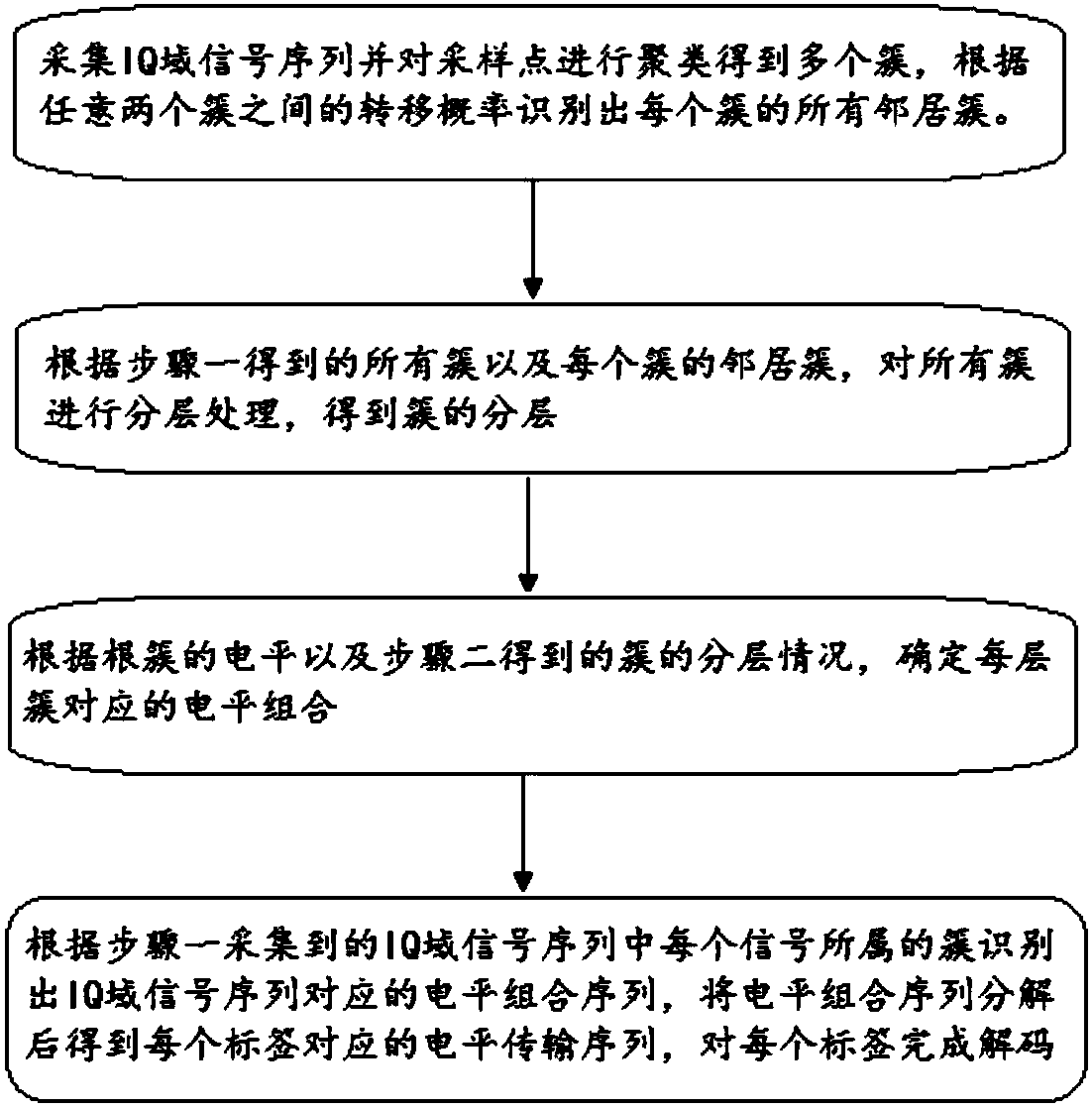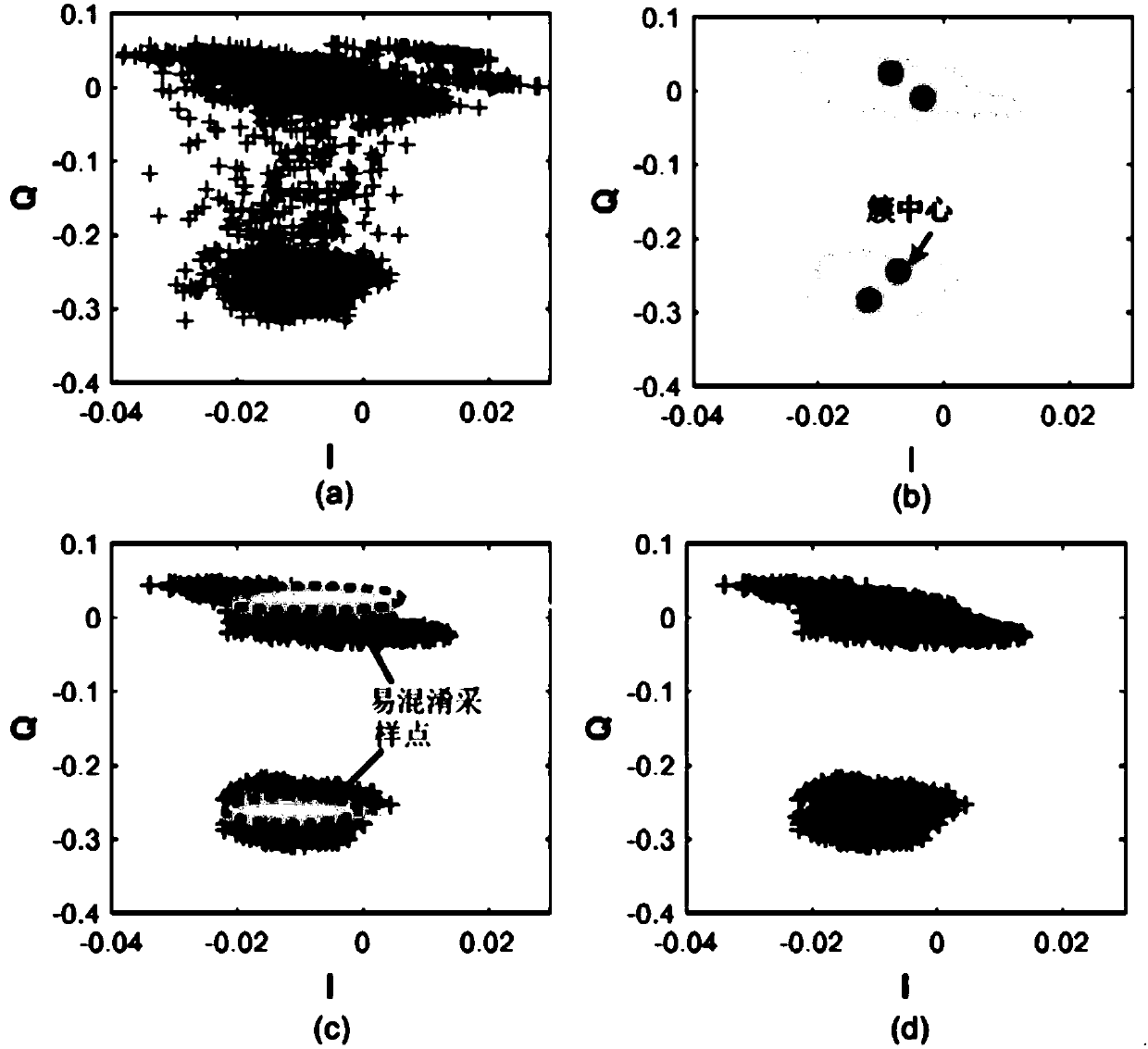Parallel decoding method and system for multi-tag signals in backscattering protocol
A technology of backscattering and decoding methods, which is applied in the field of parallel decoding of multi-tag signals in backscattering protocols, and can solve problems such as poor performance
- Summary
- Abstract
- Description
- Claims
- Application Information
AI Technical Summary
Problems solved by technology
Method used
Image
Examples
Embodiment Construction
[0070] Aiming at the problem that the existing decoding method performs parallel decoding of multi-label signals in backscatter communication with poor performance, the present invention proposes a signal parallel decoding method and system in backscatter protocol, which realizes the parallel decoding in a dynamic environment Decodes multiple collision tags, primarily for use in highly dynamic backscatter systems. Specifically include the following steps:
[0071] Step 1: Collect the IQ domain signal sequence and cluster the sampling points to obtain multiple clusters, and identify all neighbor clusters of each cluster according to the transition probability between any two clusters. Including the following steps:
[0072] Step S11, using the USRP device as a reader to read the IQ domain signal sequence sent by the tag, and generate a constellation diagram. Record the i-th signal sampling point as (I i ,Q i ). Among them, I i Indicates the value of the I coordinate of th...
PUM
 Login to View More
Login to View More Abstract
Description
Claims
Application Information
 Login to View More
Login to View More - R&D
- Intellectual Property
- Life Sciences
- Materials
- Tech Scout
- Unparalleled Data Quality
- Higher Quality Content
- 60% Fewer Hallucinations
Browse by: Latest US Patents, China's latest patents, Technical Efficacy Thesaurus, Application Domain, Technology Topic, Popular Technical Reports.
© 2025 PatSnap. All rights reserved.Legal|Privacy policy|Modern Slavery Act Transparency Statement|Sitemap|About US| Contact US: help@patsnap.com



